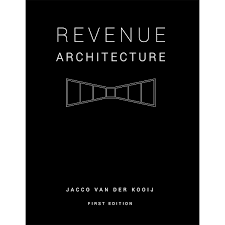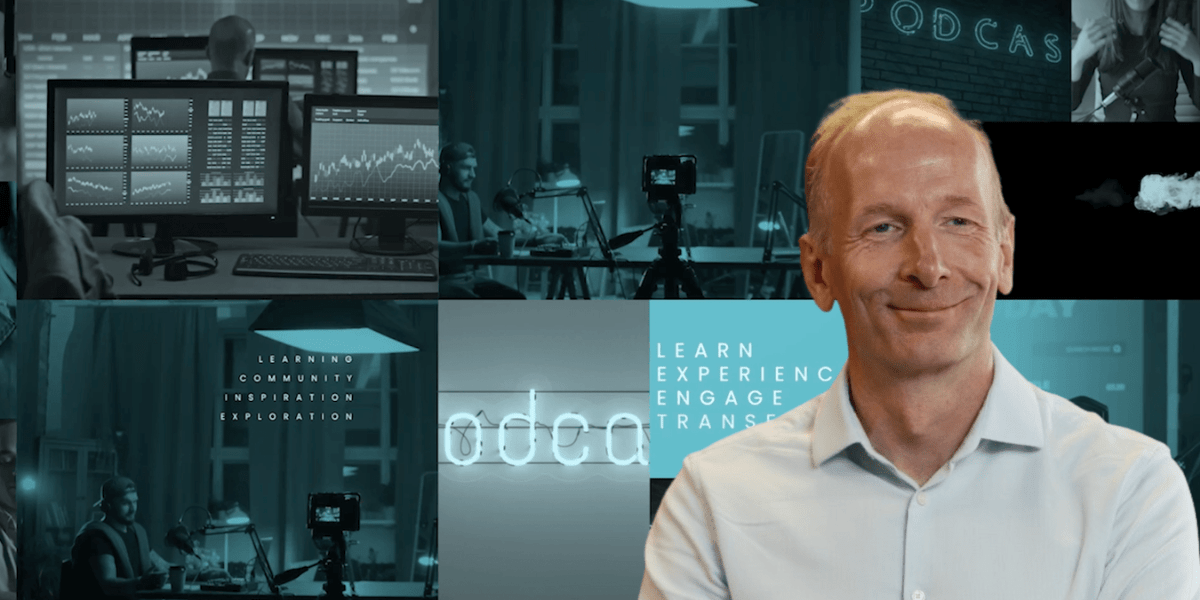
© Bowtie and Revenue Architecture - credit Winning by Design
In Season 4, Episode 4 of Force and Friction, we continue our Winning by Design Revenue Architecture Series with Jos de Wit, certified Revenue Architect and founder of MNTM.
Jos has helped SaaS and RevOps teams across Europe and North America dismantle faulty assumptions, realign broken processes, and build go-to-market systems that scale with precision.
In this episode, Jos delivers a masterclass on what it really means to “architect” your revenue engine, from foundational data models to unified customer journeys, segmentation, handoffs, and the role of AI in automation.
If your GTM strategy feels like it’s held together with duct tape and dashboards, this conversation will show you how to rebuild it from first principles.
Jos de Wit
Jos de Wit is the founder of MNTM, a high-end GTM consultancy focused on automating sales and marketing systems for scale. He’s a certified Revenue Architect, a HubSpot Solutions Partner, and a pioneer in applying Agentic AI to real-world GTM processes.
His work includes hands-on system design, revenue training, and building tools like Molly, an AI assistant designed to optimize full-funnel GTM execution.
Watch the Episode:
What is the Data Model?
Think of the Data Model as the blueprint of your GTM engine. It maps out what should be happening, how often, how well, and how fast, across every part of the customer journey.
It’s built on three core metric types:
-
Volume Metrics (VM)
Volume Metrics tell us how much is happening at each key stage of the GTM journey. They’re often counted in units (leads, opportunities, deals) or revenue (MRR, ARR, LTV), and serve as the raw material of your pipeline.
These are the hard numbers. But without context, they mean little. That’s where conversion comes in. -
Conversion Metrics (CR)
Conversion Metrics show how well each stage turns into the next. They tell you how efficient your GTM engine is, from top-of-funnel to onboarding to expansion. These are expressed as percentages.
Drop-offs between CRs signal friction. Weak CR4? It’s your sales process. Poor CR6? Onboarding or product value isn’t landing. -
Velocity Metrics (Δt)
Velocity Metrics measure time. They capture how fast leads and customers move through each phase, and where things might be getting stuck. These are critical for improving cycle time, onboarding experience, and expansion timing.If your Δt4 is too long, you burn pipeline. If your Δt6 drags, onboarding churn follows. Velocity fuels scale.
Each metric connects directly to a key moment in the Bowtie model, which includes both acquisition (pre-sale) and expansion (post-sale).
Together, these metrics allow RevOps and GTM leaders to not only measure performance, but diagnose what’s breaking, where friction lives, and how to optimize sustainably.
These three categories—Volume, Conversion, and Velocity—form the operational core of your GTM engine. You can’t just focus on one. You need to measure them together, look for gaps, and run diagnostics continuously.
Because here’s the truth:
Growth isn’t random. It’s architected.
And the architecture starts with a model that actually mirrors how your revenue factory works.

Here are the core areas we discuss in today's episode:
Architect Before You Execute: Why GTM Starts with Data Design
Jos introduces the foundational mindset of Revenue Architecture: You don’t start with the funnel, you start with the Bowtie.
“We often jump into execution with a funnel or tech stack, but if the underlying model isn’t designed first, everything breaks later.”
He explains how data models, customer segments, and buyer journeys must be mapped before revenue teams can operate effectively, and why this work often gets skipped in fast-moving SaaS environments.
The Hidden GTM Risk: Bad Assumptions at the Core
One of Jos’s most urgent messages is that bad data models lead to good teams performing poorly. Whether it’s poor ICP definition, mismatched lifecycle stages, or conflicting team incentives, if the system is flawed, results are chaotic.
“The CRM isn’t broken. What’s broken is what you’re feeding into it, assumptions, definitions, handoffs.”
Jos shares examples of companies chasing growth while ignoring deep operational misalignments that quietly kill their pipeline efficiency and customer experience.
Revenue Architecture Isn’t a Theory—It’s a System
Jos walks through how each of the six Revenue Architecture models from Winning by Design connects to the others: from operating model to funnel, customer journey, and engagement strategies.
“You need to design your revenue system like a product - with structure, feedback loops, and shared outcomes.”The goal isn’t to build documents, it’s to create a repeatable system that aligns marketing, sales, and customer success around a shared understanding of value.
Stop Fixing Tools. Start Fixing Logic.
Teams are drowning in RevOps tools and automations, Jos offers a refreshingly grounded take: fix the logic first.
“Your tools don’t need more dashboards. They need better logic. Tech doesn’t fix broken thinking.”
He urges teams to avoid jumping into HubSpot, Salesforce, or AI implementation without first defining the system architecture that the tech should support.
Automation’s Real Job: Freeing Humans to Think
Jos addresses the rising fear around AI and automation, and reframes it with clarity: automation isn’t about removing humans, it’s about removing waste.
“Automation isn’t here to replace people. It’s here to free them, to focus on work that requires judgment, context, and care.”
He explains how AI tools, implemented with proper architecture, can reduce repetition, elevate customer experience, and increase internal trust between GTM teams.
From Segments to Systems: Where the Real GTM Clarity Lives
Using examples from MNTM’s client work, Jos walks through how precision in GTM starts with clear segment definitions, matched to buyer journeys, and underpinned by a cross-functional operating cadence.
“Alignment doesn’t come from standups, it comes from shared math, shared stages, and shared outcomes.”This systemic approach replaces finger-pointing and siloed KPIs with clear accountability across the revenue engine.
Final Thoughts
Jos de Wit brings clarity, depth, and practicality to one of the most misunderstood areas of go-to-market strategy: data model design and operational architecture.
If your GTM feels like it’s scaling chaos instead of value, this episode offers a roadmap to rebuild with structure, purpose, and cross-functional precision.
The Revenue Architecture Series
Watch more episodes from the Revenue Architecture Series - get started with the founder of Winning By Design Jacco van der Kooij's interview - watch that here:

The Revenue Architecture Textbook
Order you text workbook on Revenue Architecture - more than a 'read' this is a comprehensive workbook to ensure you up skill your knowledge.
Ready to be Our Next Guest Contributor?
Your Host:
A little about Mike who hosts the show. Please connect with us on LinkedIn we would love to have you as part of our professional networks.

Mike Midgley is the CEO at 6teen30 Digital and a dynamic digital entrepreneur, nxd, strategist, public speaker, Winning by Design certified Revenue Architect and Host at The Force & Friction Podcast.
Mike has achieved successful six and seven-figure exits over a 30+ year career, raised in excess of £1.6m [$2.5m] in Venture Capital and franchised his businesses 68 times.











%20-%20Teal.png?width=500&height=130&name=Force%20%26%20Friction%20-%20Branding%20-%20Logo%20(White)%20-%20Teal.png)